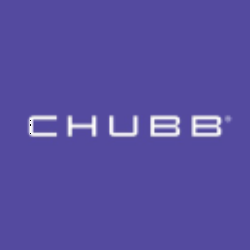Overall, Chubb Limited demonstrates a strong business model with robust underwriting and investment performance, although challenges in specific markets and competitive pressures could temper future growth. The company is well-positioned for continued success with a focus on organic growth and strategic opportunities.
Analysis Date: January 29, 2025
Last Updated: March 11, 2025
Trailing Twelve Months (TTM) values provide a view of the company's performance over the last year.
Graham Value Metrics
Benjamin Graham's value investing approach focuses on finding stocks with a significant margin of safety between their intrinsic value and market price.
Intrinsic Value
Estimated fair value based on Graham's formula
$883.18
Current Market Price: $278.06
IV/P Ratio: 3.18x (>1.0 indicates undervalued)
Margin of Safety
Gap between intrinsic value and market price
69.0%
Graham recommended a minimum of 20-30% margin of safety
Higher values indicate a greater potential discount to fair value
ROE: 14.75546148612896
ROA: 1.0444213702808378
Gross Profit Margin: 99.96779099937372
Net Profit Margin: 16.591214100384718
Trailing Twelve Months (TTM) values provide a view of the company's performance over the last year.
Strong Net Profit Margin
CB's net profit margin of 16.59% indicates effective cost management and pricing strategies, reflecting strong profitability.
High Return on Equity
A return on equity of 14.76% demonstrates that the company is proficient in generating profits from its equity base.
Moderate Operating Profit Margin
14.99%
Operating Profit Margin
The operating profit margin of 14.99% is decent but shows room for improvement compared to direct competitors.
About Profitability Metrics
Profitability metrics measure a company's ability to generate earnings relative to its revenue, operating costs, and other relevant metrics. Higher values generally indicate better performance.
Return on Equity (ROE)
Measures how efficiently a company uses its equity to generate profits
14.76%
10%
15%
Higher values indicate better returns for shareholders
TTM (as of 2025-04-16)
Return on Assets (ROA)
Measures how efficiently a company uses its assets to generate profits
1.04%
3%
7%
Higher values indicate better asset utilization
TTM (as of 2025-04-16)
Gross Profit Margin
Percentage of revenue retained after accounting for cost of goods sold
99.97%
20%
40%
Higher values indicate better efficiency in production
TTM (as of 2025-04-16)
Net Profit Margin
Percentage of revenue retained after accounting for all expenses
16.59%
8%
15%
Higher values indicate better overall profitability
TTM (as of 2025-04-16)
Low Debt Levels
0.24
Debt-to-Equity Ratio
0.06
Debt-to-Assets Ratio
CB's debt-to-equity ratio of 0.24 and debt-to-assets ratio of 0.06 indicate a strong balance sheet with low leverage, reducing financial risk.
Strong Interest Coverage
11.31
Interest Coverage Ratio
With an interest coverage ratio of 11.31, the company can comfortably meet its interest obligations, indicating strong cash flow generation.
Poor Liquidity Ratios
The current ratio, quick ratio, and cash ratio are all at 0.0, indicating potential liquidity issues that may affect short-term obligations.
About Financial Health Metrics
Financial health metrics assess a company's ability to meet its financial obligations and its overall financial stability.
Debt to Equity Ratio
Total debt divided by total equity
0.22x
1.0x
2.0x
Lower values indicate less financial leverage and risk
Less than 1.0 is conservative, 1.0-2.0 is moderate, >2.0 indicates high risk
Q4 2024
Current Ratio
Current assets divided by current liabilities


